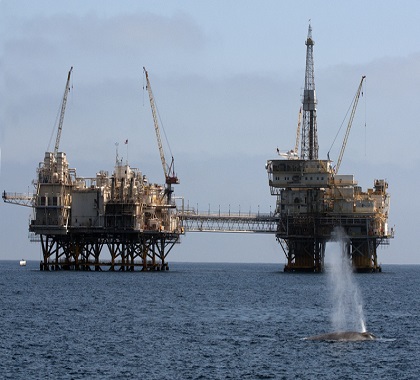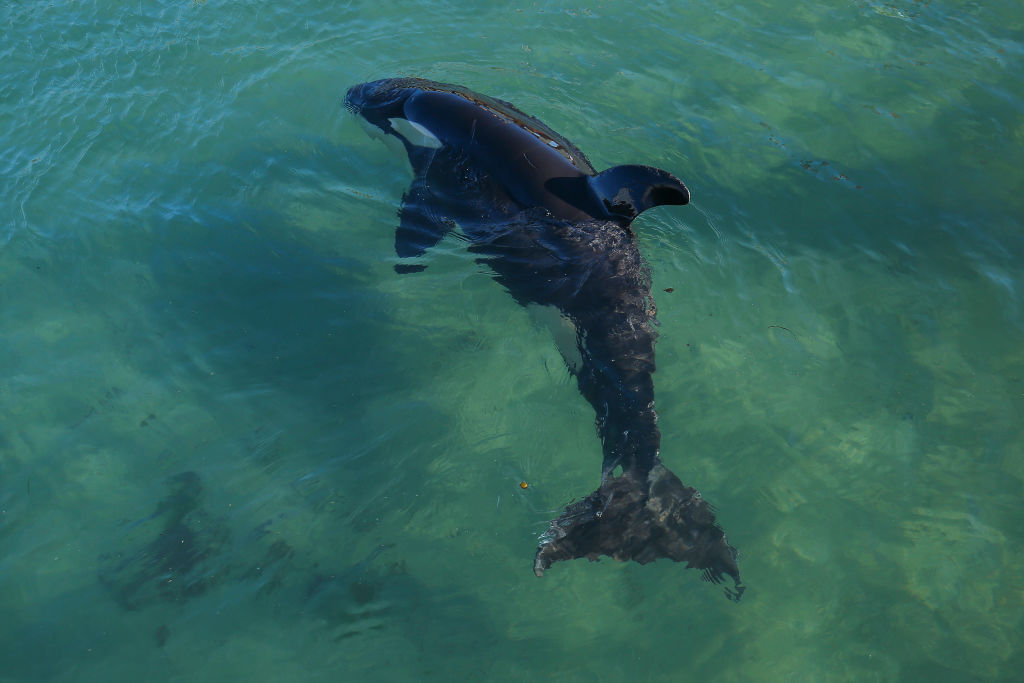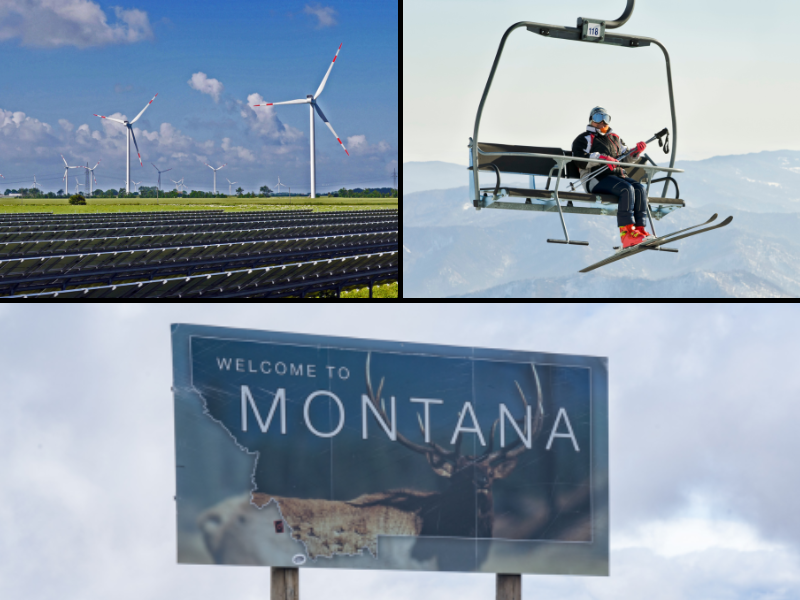North Atlantic Right Whales and
Surveying the Atlantic Outer Continental Shelf for Oil and Gas Reserves
Testimony of
H. Sterling Burnett, Ph.D.
Senior Fellow
The Heartland Institute
Delivered at a Hearing Held by the
Water Oceans and Wildlife Subcommittee of the
U.S. House Natural Resources Committee
March 7, 2019
Chairman Huffman, Ranking Member McClintock, and other members of the Subcommittee:
Thank you for the opportunity to testify concerning the need to accurately assess the potential oil and gas deposits beneath the U.S. Atlantic Outer Continental Shelf (OCS) and the purported threat a comprehensive survey of the region might pose to the North Atlantic Right whale (hereafter called “right whale”).
My name is Harold Sterling Burnett. I am a senior fellow with The Heartland Institute, where I also serve as managing editor of Environment & Climate News. I won’t bore you with my entire vitae, which you have already received, other than to say I have a Ph.D. in applied philosophy, with a specialization in environmental ethics, from Bowling Green State University.
I have been conducting energy and environmental policy work at various think tanks, as well as in the field, part-time since 1987 and full-time since 1996. The views I express in this testimony are my own and should not be construed as necessarily representing any official position of The Heartland Institute.
Energy is the fundamental building block of modern society. Fossil fuels service the lion’s share of the world’s energy needs, including in the United States. Numerous reports by the International Energy Agency and Energy Information Administration confirm fossil fuels will continue to make up more than 80 percent of the world’s primary energy base in 2050.
With this in mind, the most important questions are: Where will the United States get its share of that energy, and at what cost?
President Donald Trump has provided his answer to the former question as part of his America First Energy Plan. The Trump administration aims to pursue energy dominance by encouraging the development of all forms of domestic energy production and to minimize the United States’ dependence on foreign sources of critical energy supplies.
As part of that effort, President Trump revised a five-year energy and gas leasing program imposed under the Obama administration that barred oil and gas development in most, if not all, of the Atlantic OCS. Toward the end of the Obama administration, it also denied permits for seismic surveying in the Atlantic area.
The Trump administration has proposed replacing the Obama administration’s 2017–22 plan with a modified 2019–24 plan, including a reversal of the decision to prevent seismic surveying.
While I applaud President Trump’s commitment to putting America and its energy needs first, it should be recognized that a survey of the Atlantic OCS is not necessarily a prelude to wholescale oil and gas production, but rather an information-gathering exercise.
Good data and facts are critical to the development of good decision-making, science, and public policy. I often hear lawmakers claim when advocating for a new policy proposal, “We should follow the science.” But science doesn’t fall like received wisdom from Heaven; it requires extensive research and effort.
Before America’s political and private sector leaders can make informed decisions concerning the relative benefits and costs of oil and gas exploration or production, the government, taxpayers, and oil and gas companies must have a better understanding of how much oil and gas might be available and what it would cost to develop it.
We currently lack reliable data for the Atlantic OCS. It’s been more than 40 years since the most recent comprehensive Atlantic Coast geological seismic survey was conducted, and seismic survey technology has improved considerably since then. It has become more effective and less invasive. Because it has been so long since a survey has been completed, we have a limited, outdated understanding of the natural gas and oil resources located off the U.S. Atlantic seaboard. An updated OCS survey is long overdue.
Extensive data might, once fully gathered, show the Atlantic OCS contains so little or so widely dispersed potential oil and gas that oil companies would not find it worthwhile to explore the region. Perhaps it would lead policymakers to conclude the potential benefits are outweighed by the risks.
Alternatively, an updated seismic survey might discover the potential for billions of barrels of recoverable oil and trillions of cubic feet of natural gas. In that were to occur, the Trump administration, governors of potentially affected states, and federal and state legislators would be able to accurately consider, with open eyes, the potential benefits and costs of exploration.
Some have expressed concern seismic surveying would result in serious ecological damage, including harm to whales and other marine life. However, the National Marine Fisheries Service (NMFS), the agency charged with, among other things, protecting marine species, has concluded seismic surveying poses no significant threat to marine life. In 2014, under the Obama administration, NMFS stated, “To date, there is no evidence that serious injury, death, or stranding by marine mammals can occur from exposure to air-gun pulses, even in the case of large air-gun arrays.”
A 2014 report from the chief environmental officer of the Department of the Interior’s Bureau of Ocean Energy Management came to the same conclusion, stating: “To date, there has been no documented scientific evidence of noise from air-guns used in geological and geophysical seismic activities adversely affecting marine animal populations or coastal communities.”
More recently, in 2017, the Lamont-Doherty Earth Observatory (associated with Columbia University) conducted a seismic survey off the coast of North Carolina to map plate tectonics, using the same type of ships and equipment oil and gas mapping would require. This seismic survey went forward without any objections that I am aware of, even though it covered a larger area than testing for oil and gas off the coast of North Carolina would. Research indicates a fossil fuel survey would cover just 10–50 miles, compared to 2–200 miles for the Lamont-Doherty survey. Further, the Lamont-Doherty seismic survey sent out much stronger signals that traveled deeper into the ocean bed.
Despite the larger scale of the Lamont-Doherty survey, a study by the National Science Foundation concluded the survey caused no consequential harm to the ocean’s wildlife or the ecosystem.
It’s also worth noting many of the same people and groups objecting to an oil-and-gas-related seismic survey because it would harm the right whale have not expressed similar objections to the seismic surveys that would have to be conducted to erect the huge, much more extensive and interconnected offshore wind farms proposed for placement in right whale migration routes and breeding grounds.
An exception to my previous statement was included in testimony to this very committee on February 7, when Beth Casoni, executive director of the Massachusetts Lobstermen’s Association, provided a single-paragraph warning of the potential harms posed by offshore oil and gas development to fisheries and whales. She devoted three paragraphs to providing warnings of the dangers to the fishing industry and right whales from offshore wind turbines. If seismic surveys are dangerous to North Atlantic Right whales, why should renewable energy companies be permitted to site offshore wind turbines?
There are anthropogenic threats to the right whale, but offshore oil and gas production and seismic testing are not foremost among them. Shipping vessel strikes account for the largest percentage of human-caused right whale mortality. Entanglement in floating fishing lines also accounts for many injuries and deaths. One study estimated approximately 85 percent of right whales have entanglement scars. Further, a Canadian estimates shipping strikes and entanglement have accounted for nearly 50 percent of all known right whale deaths since 1970. Plastics in the ocean are another potential source of harm.
Interestingly, the development of oil and gas for use as fuel might actually have contributed to saving the right whale and a few other whale species from extinction. History shows the greatest threat to whale survival ever recorded was the whaling conducted by humans to render blubber down to whale oil for use in lamps and for other uses. The right whale got its name because it was the “right” whale to kill for its blubber, which could be rendered into whale oil and other products. The advent of the fossil fuel industry saved whales from extinction, because the world quickly replaced whale oil with kerosene and other petroleum products.
One final objection I wish to address is that some say because the world is awash with oil and gas and prices are so low, we don’t need to survey or explore new offshore areas. It’s true that it takes years from the time offshore surveys are conducted to when leases are offered, areas are explored, and production takes place. As much as a decade can pass from survey to production.
In the past, I’ve debated people who said during periods of high prices, we don’t need to explore for new offshore oil and gas regions because it would take 10 years to develop, and by then, the crisis will pass. To that, I say, “Let’s get ahead of the curve and prepare for the next shortage.” One thing we can be fairly certain of is oil and gas supplies won’t always be so abundant and prices so low. The best hedge against future high prices is to know where to go to exploit future oil and gas reserves, as well as how much exists.
Historically, physical and political restrictions have limited supplies of these two critical resources, causing price spikes that rippled throughout the U.S. economy, harming businesses and consumers. By conducting a comprehensive survey now, industry can hit the ground running to produce new supplies when limited supplies and high prices make such development economically worthwhile, and when the same factors incentivize political leaders to support production.
Further, and this is just speculation, the fracking revolution that so many of the same people who object to offshore oil and gas exploration decry might partly have resulted from the absence of an up-to-date survey of OCS reserves and restrictions on OCS production outside the Gulf of Mexico.
Fracking is largely responsible for the economic recovery that began late in the Obama administration, as the oil and gas industry was responsible for an outsized proportion of the growth in employment. Lower energy prices, provided in large part by fracking, have also helped mom and pop businesses and large companies alike to compete with global competitors, and they have helped to bring back the chemical production and refining industry to America’s shores.
Modern fracking required the development of technological innovations and new techniques that might not have been sought or developed had offshore oil and gas mapping, exploration, and production been shuttered outside the Gulf of Mexico. If permitted, industry might have used existing deep-water drilling technologies to develop OCS oil and gas reserves, rather than seeking new techniques to exploit additional reserves on land.
In closing, thank you all once again for the opportunity to testify concerning this important issue. I look forward to any questions you might have regarding my testimony.




